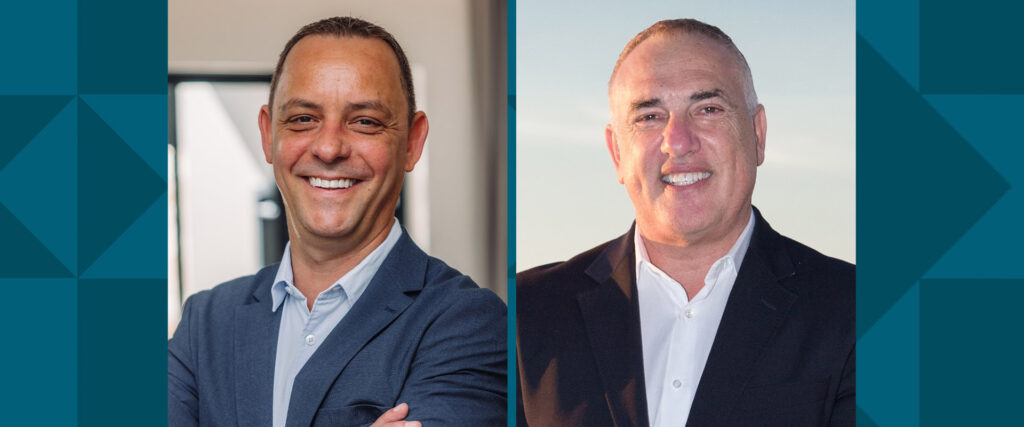MAIN IMAGE: Carl Coetzee, BetterBond CEO; Samuel Seeff, Chairman of the Seeff Property Group
Staff Writer
With a week to go until the MPC meets again to discuss the repo rate red lights are starting to flash for consumers in the housing market. This will also put additional pressure on the abilities of property practitioners to remain successful in the housing sector.
Having not only survived but thrived during the pandemic, South Africa’s property market has proven to be a sound investment option, especially during challenging times.
As consumers prepare for another repo rate hike this month, it is important to note that even if it climbs by 50 basis points to take the prime lending rate to 8.75%, this is still well below the 10% it was before the pandemic, says Carl Coetzee, CEO of BetterBond.
“There are still opportunities for aspirant buyers and investors, notwithstanding the challenging prevailing economic conditions.
“There is no denying that times are tough. The ongoing Ukraine conflict is having an impact on oil and fuel prices and electricity prices have soared. This as Eskom escalates its load shedding schedule, disrupting businesses with a significant impact on an economy recovering from Covid,” Coetzee says.
South African Reserve Bank Governor Lesetja Kganyago has gone on record to say that a hike of 25 or 50 basis points is “not off the table” and economists at BNP Paribas have cautioned that we could even see a 75-basis point hike, which would take the prime lending rate to 9%. “Affordability is always a consideration when buying a home, especially in the face of rising interest rates,” says Coetzee.
The prime lending rate will still be in single digits, and this does give homeowners an opportunity to invest in property as a long-term investment. BetterBond has seen an almost 7% increase in the ratio of formally granted bonds for June year-on-year, which is significant coming off the high base set last year, says Coetzee.
“While the honeymoon period for first-time buyers seen in June 2021, shortly after the lifting of lockdown restrictions as the interest rate dropped to a record low, has moderated, the industry has seen a marked increase in bond applications for homes of R3 million and more.”
Application volumes in this price band have risen by 31,76% year-on-year for June, suggesting that repeat buyers are still benefiting from the single digit interest rate. Similarly, bond applications for homes of between R2.5 million and R3 million have increased by almost 19% for the same period, says Coetzee. This substantiates the view posited by Absa at a recent stakeholder presentation that much of the current buyer activity is from second-time buyers and investors looking to buy to let. “Although first-time buyer activity has slowed, partly because of inflationary pressures and rising living costs, BetterBond has seen a 5,37% increase in the ratio of formally granted bonds to these buyers.”
According to Absa, homeowner sentiment suggests that the property market remains robust despite the economic headwinds. Sales Leader for Absa, Ian Lamprecht recently said that 78% of respondents still think it is a suitable time to invest in or buy property. A positive sign for the long-term sustainability of the property market is that there is plenty of movement, with people buying and selling to adapt to their changing needs, he added. The FNB Estate Agent Survey for the first quarter of 2022 put the average time on the market at eight weeks, well below the 14 weeks it was in 2008 during the global financial crisis.
With the interest rate set to rise again in two weeks’ time, new home buyers may now think about whether to fix the interest rate on their home loan to create a buffer against further hikes.
Samuel Seeff, chairman of the Seeff Property Group, says the decision as to whether to fix your interest rate depends on the individual. He says that in his over 38-years in the industry, the interest rate averaged around 12% to 16%. Thus, at 8.25% and even taking it back to the 10% level where it was prior to the onset of the Covid-19 pandemic is still well below the average.
The drawback is that a fixed rate is usually set at a few percentage points above the prevailing rate, usually upwards of 2 percent. In South Africa it can only be fixed for 3 to 5 years compared to overseas where you could fix it for up to 10 to 30-years. While it allows you to plan for certainty, it is only for a brief period and the rate might not reach the amount of your fixed rate which means you are not benefiting if the rate drops.
Seeff says investing a deposit upfront is a great way to ensure you have a financial buffer. It will reduce the amount that you need to borrow and allow you to accumulate capital value faster.
“You should aim to put any spare money into your home loan as another way to reduce the repayment period and the interest that you will be paying in the long term. Keeping the repayment steady when the rate drops is one way to build up equity and the sooner you can pay off you home, the higher the capital value and equity that you can accumulate,” Seeff emphasised.
Irrespective of the outcome of this month’s Monetary Policy Committee meeting, the message is clear: consumers need to look at their monthly expenses and what they can afford as interest rates start to climb, says Coetzee.








